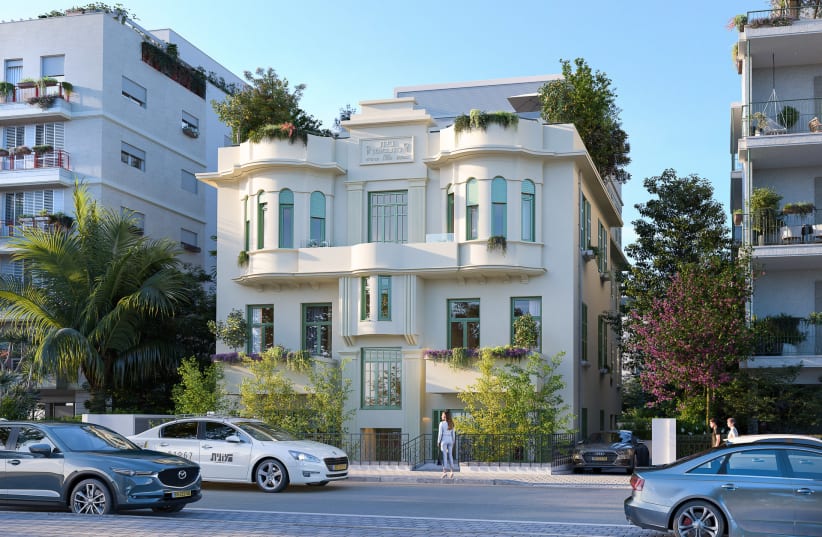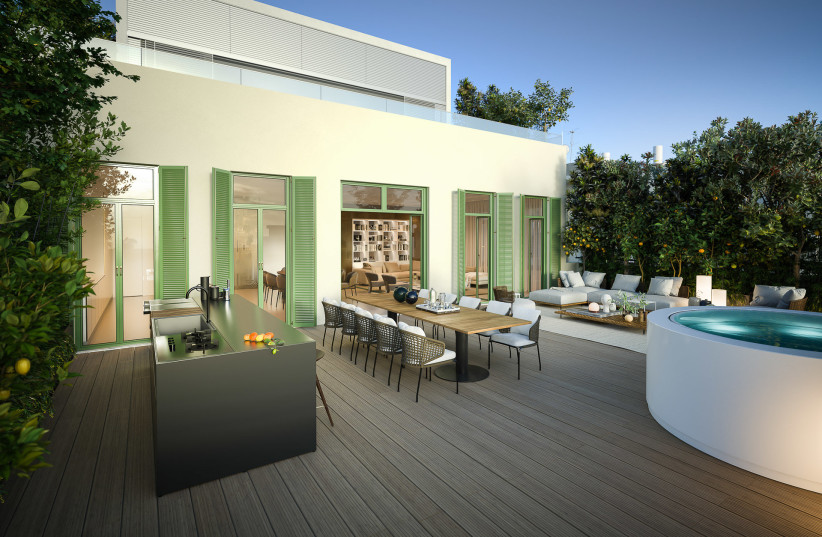Take a walk through the small streets of Tel Aviv and you will no doubt encounter an eclectic array of unique architectural designs.
It is no wonder the White City, on the shores of the Mediterranean Sea, was named a United Nations Educational, Scientific and Cultural Organization (UNESCO) World Heritage Site in 2003, for the special architectural qualities of its buildings, streets, squares and avenues.
“The city of Tel Aviv as a UNESCO world heritage site places a very heavy weight on the design and the beauty of buildings in the city,” David Mekiyess recently told The Jerusalem Post.
Mekiyess together with Noam Richter, co-founders and owners of Binyan Hair Tel Aviv, are real estate developers who have an expertise is in restoring and preserving historical buildings.
“Today in Tel Aviv there are around 190 historical buildings marked by the municipality as buildings for strict preservation, and another 2,000 that are buildings for light preservation,” Mekiyess said.
The difference, he explained, is that a building for strict preservation “places an emphasis on every element – from the blinds, to the original color of the paint, to the interior staircase – all the elements have to be perfectly restored.” Whereas by contrast, light preservation simply entails restoring the building’s original façade.
Their latest project on the historical 19 Pinsker Street in Central Tel Aviv is an exceptionally unique building with a rich and well documented history – and one marked for strict preservation.
Originally built in 1928, the building was constructed in the eclectic style characteristic of the period by Architect Arie Shtrimer and served as the residence of the Ne'eman family. The building's main characteristic is a combination of Western architecture with ornamental styles drawing inspiration from both classical architecture as well as from the Far East, Art Deco, Moorish Spanish architecture, Art Nouveau and ancient Middle Eastern architecture all fused into one.
Nahum Ne’eman, the family patriarch, was born in Serbia in 1886 and immigrated to Israel. He lived in the residence with his wife Rachel and their four daughters: Hanna, Shulamit, Hemda and Yedida until 1941, when they were forced to sell due to financial hardship. During their time in the house, the family assisted the residents of Tel Aviv and new immigrants arriving to the Land of Israel, essentially becoming an absorption center for Jewish immigrants from Serbia.
“The buildings in Tel Aviv often speak for themselves. Each has its own unique story to tell, and they all have something different to offer,” said Mekiyess.
The building's preservation, overseen by architect Yiftach Arad, aimed to capture the history and essence of the original structure while adjusting to fit contemporary standards. As such, the new building implements advanced technologies such as fast automatic parking with the highest quality of finishing materials for every apartment.
Additionally, on the roof of the building, the historical small rooms of the Ne’eman family’s two servants have been transformed and expanded into two exclusive penthouse additions, currently for sale.
The penthouses merge the historical building with a truly modern living experience and include a jacuzzi, a private pool, a gym and a spa.
“The municipality allowed us to expand the two workers’ quarters on the roof into contemporary and essentially ‘unseen’ penthouses,” he said. “This was a pilot program, which sought to fuse the historical with the modern and incorporate green construction into the building.”
The project was also recently named by the Tel Aviv municipality as one of the ten most beautiful buildings in the city and will be featured at the Liebling Haus Museum, or The White City Center.
“As a company, it is really important for us to instill that ‘WOW’ factor. Every time we see this building, we feel it. When people walk by the building, they stop to take pictures,” he said.
“Buildings for preservation really are a fusion of a house and a design. People who live in these types of residences understand their added value, and they will find it difficult to move to a different home,” he added.
As such, Mekiyess estimates that there are only tens of buildings or so left in Tel Aviv geared for strict preservation. “At a certain stage it will be virtually impossible to buy an apartment in an historical building.”
“And so, I would invite everyone to take a walk-through Tel Aviv to see these buildings, and even ask for a tour inside; the owners are usually very proud to show off these pieces of history,” he said. “And my hope is that everyone who is inspired and moved by these buildings, will have the ability to experience a home like this.”
For more information: 19 Pinsker Street
This article was written in cooperation with Binyan Hair Tel Aviv

